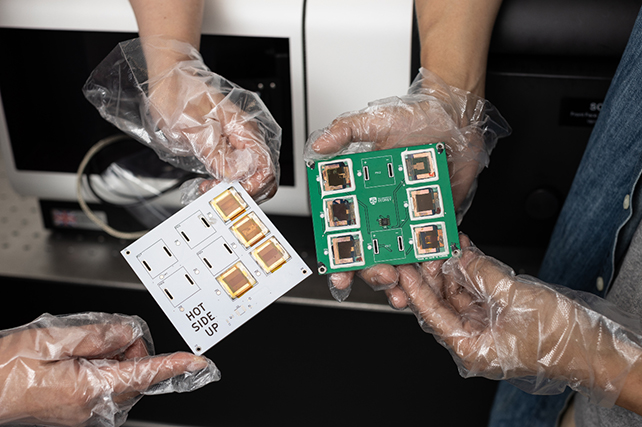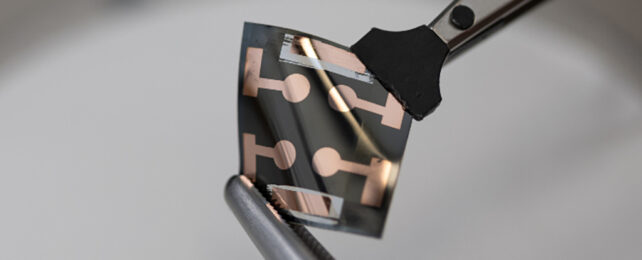Newly developed solar panels can self-heal and repair themselves when damaged by space radiation. This finding promises to make power sources for satellites and spacecraft more resilient and reliable in the future.
A type of solar panel known as a perovskite solar cell (PSC) has previously shown a lot of potential for use in space: It's lightweight and relatively affordable to make, and it converts solar radiation into electricity at a high level of efficiency.
However, it must also withstand the high-energy barrage of proton particles in space. The researchers behind the new study, from the University of Sydney and the Centre for Accelerator Science in Australia, think they're found a solution.

"Space hardware will be exposed to proton radiation on these orbits," write the researchers in their published paper. "Therefore, it is of great interest to evaluate radiation stability for PSCs."
In lab conditions designed to simulate the effects of proton radiation across tens or even hundreds of years, the researchers tested ultrathin solar cell substrates suitable for use in satellites, the first time that materials with these properties had been tested like this.
The experiments found that the hole transport material (HTM) in the PSC was crucial to how much damage it could take and how well it could heal. The HTM facilitates the movement of holes (the absence of electrons) in solar cells, enabling them to stay separated and for electricity to be produced.
Two particular types of HTM and one type of dopant (a modifying substance applied to HTMs) were shown to be best at resisting proton radiation damage. Carefully configured, the HTM can also enable self-healing of the panels and all the way back up to 100 percent of their efficiency.
This healing is done through a process of annealing, or the application of heat in a vacuum, which could be powered by the Sun. In theory, solar radiation could repair these solar cells as well as power them.
Getting that working will take a lot more research, but this study shows that it's possible – that we could one day have spacecraft powered by solar panels that can repair themselves. Considering the high costs of going to space, that could make a huge difference.
"We hope that the insights generated by this work will help future efforts in developing low-cost lightweight solar cells for future space applications," says nanoscientist Anita Ho-Baillie from the University of Sydney.
The research has been published in Advanced Energy Materials.
